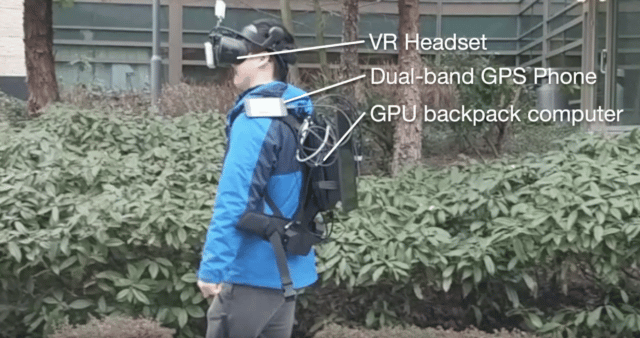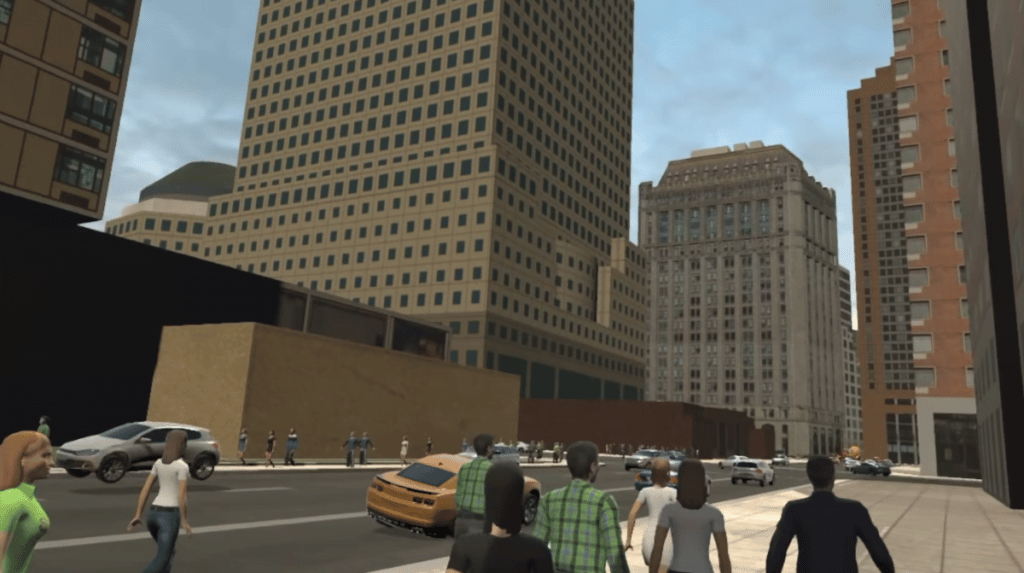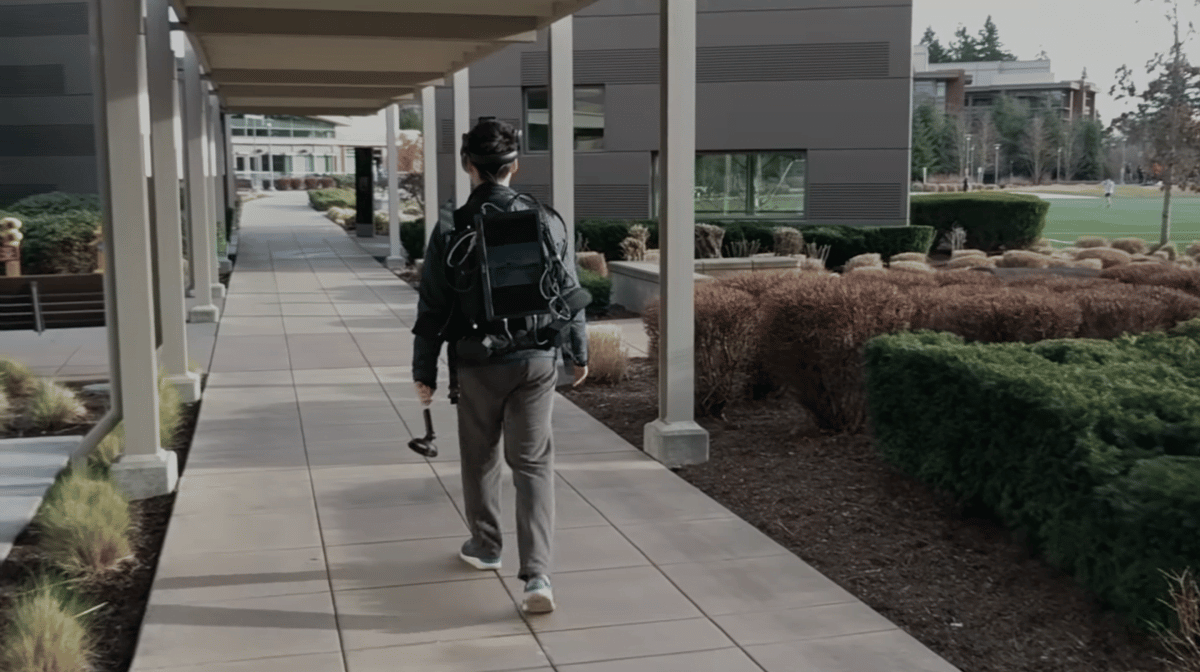How many times have you happened to dream of a beautiful kiss and wake up realizing that you have lemonized with a pillow? Here it is.
With DreamWalker Microsoft is trying to transform the daily journey to work by immersing users in a virtual reality that replaces the normal one while they walk.
In a paper recently published, researchers Jackie Yang, Eyal Ofek, Andy Wilson and Christian Holz provide “a future where people spend much more time in virtual reality, even during moments when they walk between locations in the real world”. To do this, they created a VR system that allows its users to walk on foot in the real world while simultaneously seeing themselves walking in a virtual place of their choice.

You go to that anonymous bus stop and in its place you see an oasis in a desert. Instead of your bar you'll find Moe's, like in the Simpsons. That Garibaldi statue has something different… But yes, it's Batman! A lucid daydream, in short.
How does Microsoft Dreamwalker work?
The system aims to keep users fully immersed in the virtual world despite real-world obstacles. To do this, the software's AI finds a path into theVR environment similar to what the user is walking in the real world.
It is designed with its own tracking system that uses GPS positions, internal-external tracking and various sensors to guide users to stay on the right path, help them avoid obstacles and take them to their destination, all while keeping them immersed in a dynamic virtual way that suitable for the real one.
The test
The team is in the process of experimentation and has tested the system on eight participants who were asked to cross the Microsoft campus along a 15-minute journey while walking through Manhattan in the world of virtual reality.
Obviously, this VR system has a long way to go before seeing the light.
In its current version, the VR scenes in Microsoft DreamWalker aren't exactly an alternative to the real world: it feels more like walking through the screens of a video game like The Sims. It's not like the movies, folks. At least not yet.

Not to mention the consequences on real life: a GPS calculation error and here is a user under the inevitable lorry.


